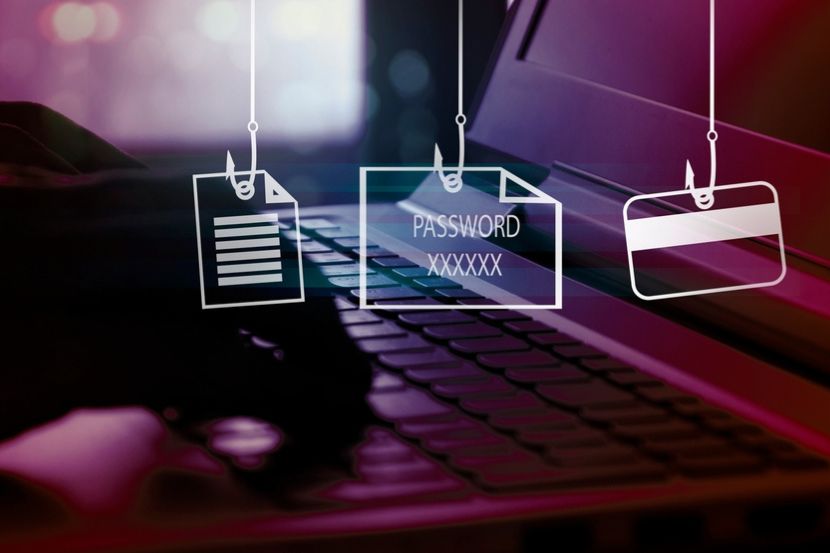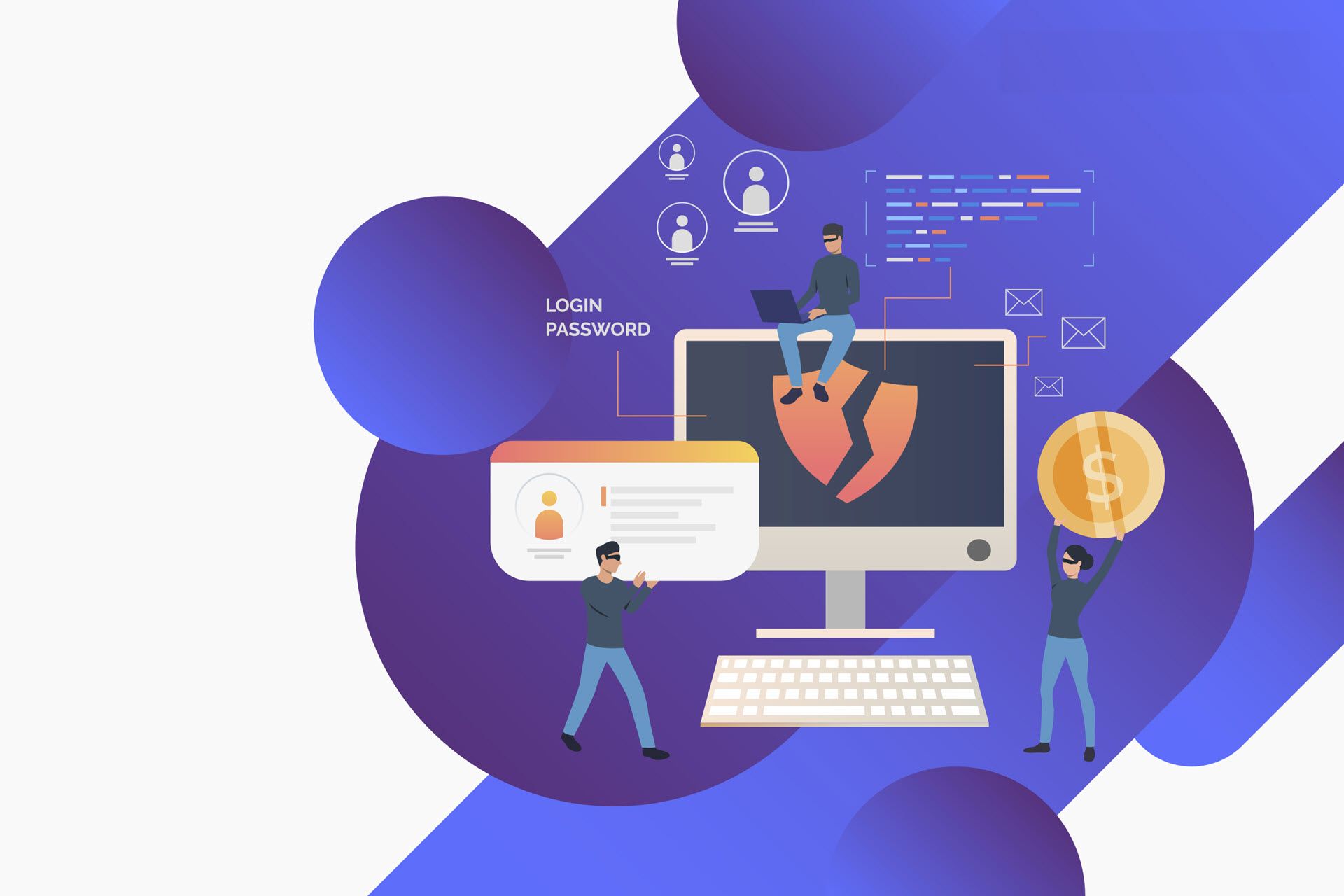Phishing attacks are the most prevalent digital threat for individuals and businesses today. Cybercriminals use various tactics to trick victims into sharing sensitive information or authorizing money transfers, which can lead to financial, legal, and reputational damage.
This article explains everything you need to know about phishing attacks, how to identify different phishing types, and how to prevent these attacks before they happen.

What Is a Phishing Attack?
A phishing attack is a cyber attack that tricks individuals into revealing sensitive information, such as passwords or other personal data. It involves contacting the potential victim through electronic communication and posing as someone else, usually an authority figure, a trusted vendor, or a client.
Phishing is a form of social engineering attack where criminals use psychological tools to manipulate their victims into performing actions that jeopardize their personal or workplace cybersecurity. Here are some of the actions that phishing emails commonly provoke:
- Revealing personal information, including passwords, social security numbers, bank account details, and other sensitive data.
- Clicking links to malicious websites that mimic authentic ones but are designed to steal login credentials or personal information.
- Downloading malicious attachments that contain malware, spyware, or ransomware.
- Authorizing money transfers.
- Sharing tokens or security codes for two-factor authentication under the guise of account verification or security updates.
- Providing remote access to attackers impersonating technical support.
Phishing scams are becoming increasingly sophisticated, so individuals and organizations must be vigilant in preventing them through advanced security measures and continuous education.
Learn all about whaling attacks, a common subtype of phishing that targets the highest-ranking individuals in an organization.
How Do Phishing Attacks Work?
Phishing attacks exploit human psychology and trust when aiming to obtain sensitive information. Here is how a phishing attack works:
- Target identification. Depending on their strategy, the criminals either cast a wide net, targeting a large number of people, or find specific individuals for a personalized, more insidious attack.
- Crafting the message. Attackers create a message imitating the style and language of a trusted entity, usually creating a sense of urgency or fear so the recipient reacts impulsively.
- Message delivery. The message is delivered via email, text message, phone call, or social media.
- Baiting. The message contains a call to action that prompts the victim to click a suspicious link or download an attachment containing a virus that bypasses security systems to steal data.
- Data harvesting. Once the cybercriminal enters the system, they steal data as a one-off event or repeatedly.
- Exploitation. The attacker uses stolen information to perform further fraudulent activities, such as money transfers, identity theft, or selling the data to others.
- Covering tracks. Attackers typically cover their tracks to avoid detection. This allows them to re-enter the system unnoticed and continue their criminal activities.
Types of Phishing
There are many types of phishing that individuals and organizations must watch out for.
- Email phishing. This is the most common type of phishing. It typically contains damaging links or suspicious attachments that bypass spam folders and end up directly in the victim’s inbox.
- Whaling. This attack targets a specific, high-ranking individual, such as an executive or senior official, with the goal of causing maximum damage.
- Spear phishing. This is a more targeted attack aimed at specific individuals or organizations.
- Vishing (voice phishing). This attack is performed via a phone call, where the attacker pretends to be a trusted entity to deceive their target.
- Smishing (SMS phishing). This attack comes as a text message containing suspicious links or attachments.
- Pharming. This attack redirects users from legitimate websites to fraudulent ones by exploiting DNS or infecting the users’ devices.
- Clone phishing. This attack clones previously delivered emails to make them look like legitimate resends or updates of the original email; the cloned email contains malicious links or attachments.
- Business Email Compromise (BEC). The attacker impersonates a company executive or employee to deceive the target into transferring money or disclosing sensitive information.
- Angler phishing. This attack targets users on social media platforms by impersonating customer service accounts, attempting to discuss a product or a service.
- Popup phishing. This attack is delivered via a pop-up window on a website that prompts visitors to enter personal information.
Education is the best means of prevention. Read about notorious real-life examples of social engineering attacks to find out what these attacks may look like and what to look out for.
Facts Behind Phishing
Here are a few interesting facts and stats about phishing that demonstrate its scope and the severity of the consequences it carries.
- The first recorded phishing attack occurred in the mid-1990s on the AOL (America Online) network, utilizing algorithms that generated random credit card numbers to spam other users.
- The number of phishing attacks increased by 220% during the COVID-19 pandemic as criminals capitalized on the increased online activity of users.
- Phishing accounts for 22% of data breaches, making it the most prevalent form of cybercrime.
- Phishing has evolved into a business model thanks to Phishing as a Service (PhaaS) platforms that provide phishing software kits for a fee.
- The costs of phishing have significantly increased in the past couple of years. On average, a phishing attack on a mid-sized company can cost up to $1.6 million.
- Advancements in AI have helped cybercriminals design increasingly sophisticated phishing attacks that are more difficult to detect and prevent.
Types of Malware Used in Phishing Attacks

Phishing scams rely on malware that compromises company systems to steal sensitive data. Here are the types of malware used in phishing attacks:
- Viruses attach themselves to clean files and spread throughout the computer system, infecting files with malicious code that affects functionality.
- Spyware eavesdrops on user activity to collect data and credentials, and then uses this information to perform identity theft.
- Trojans pose as legitimate software but have been designed to create security backdoors for malware, data theft, and system infections.
- Adware compromises security by displaying harmful ads that track browsing data and steal personal details.
- Ransomware locks and encrypts the victim’s data until a ransom is paid.
- Rootkits gain undetected access to administrative-level control (root access/privileges) to modify system functions.
- Bots are remotely controlled and used to perform coordinated, large-scale phishing attacks.
- Keyloggers record keystrokes made by users to gather usernames, passwords, and credit card details.
- Banking trojans are explicitly designed to steal financial information, including banking details and credit card information.
- Worms are similar to viruses but spread independently without attaching to a host file.
How to Prevent Phishing
Luckily, there are many ways to prevent phishing. Here are some of the strategies organizations and individuals should employ to minimize the chances of phishing attacks:
- Educate your employees to recognize phishing attempts before they happen through security awareness training.
- Install anti-malware software to detect and block phishing attempts, viruses, trojans, and other threats.
- Employ best email security practices, including email filtering and encryption, to protect your organization.
- Regularly update software, including systems, browsers, and antivirus programs.
- Use multi-factor authentication (MFA) on all accounts and devices to add an extra layer of security, even if credentials are compromised.
- Verify all communication that seems off, requires immediate action, requests personal information, or generically refers to you.
- Be cautious of unsolicited requests, particularly those that ask for personal information or money transfers.
- Do not click suspicious links or attachments, and hover over them to make sure the URL isn’t hijacked.
- Check website security by only visiting those with “https” in the URL. If they don’t, they are not secure and should be avoided.
- Implement a data backup strategy to ensure swift disaster recovery in the event of data and system compromise.
- Implement an incident response plan that outlines steps to be taken if you or your organization unexpectedly falls victim to a phishing attack. This will ensure you restore normal business operations as soon as possible.
- Use a VPN on public Wi-Fi to encrypt your internet connection and protect data from interception.
Securing the Digital Horizon
Phishing attacks present serious challenges to both individuals and organizations in today’s digital environment. These attacks are especially dangerous because they exploit human psychology and technological weaknesses to steal sensitive data and money. As a result, it is crucial for organizations to adopt advanced security measures and remain vigilant against these malicious threats.



